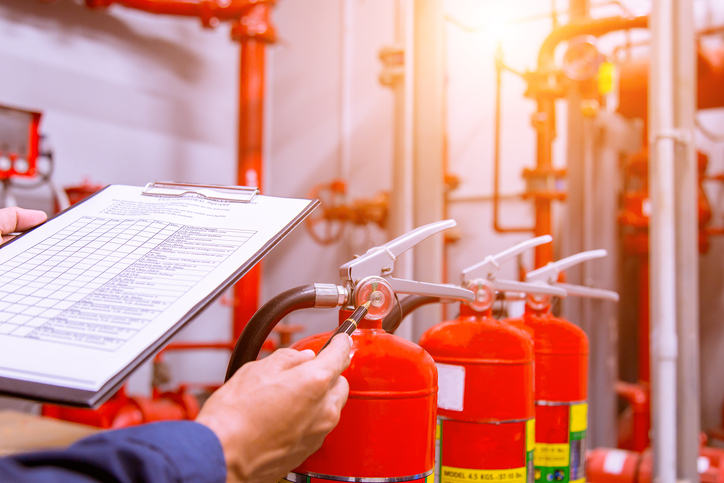Safety is one area business owners shouldn’t overlook. According to the National Safety Council, a worker is injured on the job every seven seconds. It’s essential to make sure your employees are given the tools to succeed, while also ensuring you have created a culture of safety to minimize any risks their daily activities may carry.
Workplace safety programs are designed to give you the tools necessary to develop and manage an effective safety culture that will not only help reduce work-related injuries and workers’ compensation costs but assist in helping you meet federal regulatory requirements as well. Here's what you need to know about implementing a successful workplace safety program.

Create a Culture of Safety
Before you create your workplace safety program, it’s important to understand what it takes to create a culture of safety in your organization. Here are the four keys to an effective safety culture.
Facility Audit
Walk the facilities and observe processes and field work to identify the types of hazards employees are exposed to. For example, you might notice a mezzanine 5’ above another floor with no guardrail system. Or, maybe one of your project managers stops to check on the progress of your electricians and discovers they are working on live circuits without locking out breakers.
Hazard Control
Once you identify the different hazards your employees are exposed to, you’ll need to find a way to control them. The different types of hazard control include:
- Elimination
- Substitution
- Engineering
- Administrative
When assessing the different hazards in your workplace, discuss which would be the best method for combating the issue. For example, if you have a large hole in the middle of your job site, you could:
- Elimination: Fill the hole in.
- Substitution: Issue fall protection for employees.
- Engineering: Add a guard rail around the hole.
- Administrative: Close that area of work down.
Employee Training
Now that you have identified and controlled the risks, it’s important to train your employees on the measures you’ve taken to protect them and what role they must take in their own safety. For example, if you purchased fall protection equipment, you must now train employees to know when to use the equipment, the equipment’s capabilities, how to utilize the equipment safely, and how to inspect the equipment correctly.
Documentation
It’s critical to keep a record of all types of safety data, as much of it is required by law. You’ll need to keep documentation of:
- OSHA 300 logs
- Safety data sheets
- Safety training and tool box training sign-in sheets
You’ll also want to track your progress and document your steps by keeping your job hazard analysis and standard operating procedures.
Document Programs
Companies with 10 or more employees must have, at very least, these four safety programs in place: Health and Safety Manual, Emergency Response Plans, Fire Prevention Plans, and a Hazardous Communications Program. After these, it may be required that you have more written programs based on the specific hazards your employees are exposed to, such as fall protection programs, respiratory protection programs, and forklift operation programs.
Implement Your Workplace Safety Plan
Just having the documentation on hand doesn’t keep your employees safe. Use your programs to develop a training regimen. Owners are required to train their employees, but sometimes struggle to find content. Your written health and safety documentation can provide you with a unique, job-specific training curriculum. Your training sessions should be based on prioritizing your specific hazards from those with the largest potential for catastrophic outcomes to those with the least and then creating a yearly training schedule tackling the biggest hazards first.
Obtain Employee Buy-In
The hardest part of achieving an effective safety culture is obtaining employee buy-in. It’s important to let your employees know that you care about them and want them to go home and enjoy their free time, family, and friends in the healthiest way possible. As an owner or production manager, you need to convey the message that safety will never take a backseat to production or service. Look to your frontline supervisors to lead by example in following your workplace safety plan. Give them the authority to enforce the written discipline policy, but more importantly give them the influence and knowledge to implement your safety program daily, so they are familiar with the hazards, controls, and regulatory requirements of each job, exemplify the standard, and engage employees in the process.
Outsource Your Risk Management Services
Many small business owners struggle to stay ahead of the risks associated with workers’ compensation and workplace hazards. Group Management Services (GMS) is dedicated to reducing your risk through onsite consulting, jobsite inspections, accident and injury investigations, training, and education.
As you think about ways to keep your workplace safe, you might also want to think about other ways you can make your workplace simpler, safer, and stronger. GMS offers payroll, risk management, and human resources services to help keep your business running smoothly all through the year. Contact GMS today to talk with one of our experts about how you can ensure workplace safety at your organization.